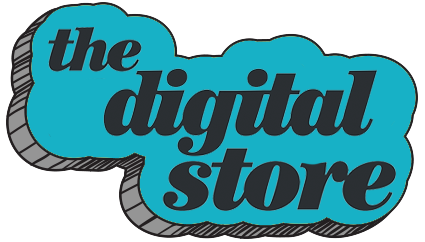“Better Not Louder” – How Designers Can Make PR Work for Them
Katie McIlvenny shares her key learnings from her first year as a freelance PR consultant, and how design studios can make the most of media opportunities.

I’ve worked with branding and design studios since 2017; some small and nimble, others larger and more process-heavy. But after a year flying solo as a freelance PR and media consultant, I’ve had a proper education.
If my early years taught me what makes a good story, this year showed me what actually gets published, and why some PR works while a lot doesn’t.
With budgets tighter, timelines shorter and attention spans in freefall, design studios often ask – is PR worth it? The short answer is – it depends.
Here’s what I’ve learned over the past 12 months.
1. A new project isn’t a story
Let’s start here because it’s the biggest misconception I see and the biggest shift I’ve noticed in the last year.
New work might excite your agency, but that doesn’t make it media-worthy. Ask yourself – why should anyone else care? Especially through a design lens; not just what was made but why it matters now.
Does it offer fresh perspective, useful takeaways or cultural context? If not, it’s probably better suited to your own channels. Be honest with yourself, and don’t lose it when your PR is honest with you.
This is doubly true in design, where fewer editorial staff face more agencies and studios than ever. The bar’s high. Stories that get picked up usually:
- Tap into a wider cultural moment.
- Offer a surprising point of view.
- Speak to a business or societal shift.
- Spark discussion beyond the design bubble.
Journalists aren’t your marketing team. If your pitch reads like a case study padded with adjectives, it belongs on your blog, not their inbox.
2. Think like a journalist
This is the one I’ve seen trip people up the most. Founders and design leaders often want to prove value through their creative thinking, like the layers of meaning behind a wordmark, or the strategic rigour of their grid system.
And that’s all valid. But the best PR doesn’t say, “Look how good we are.” It says, “Here’s something we’ve seen or done that adds to the conversation about design.”
Design publications want to know what’s relevant, not just what’s new. What does this say about how design is being used right now? What’s changing? What’s being challenged? Why does it matter?
If your story helps people in the industry think differently about processes, tools or the role design plays in culture or business, it’s got legs.
The most effective pieces I’ve worked on start with a half-baked idea, a hunch or even a rant about how a client brief made a creative director question everything. If there’s a sharp point of view in there, we can shape it.
That doesn’t mean being provocative for the sake of it, Just be honest. The design world doesn’t need more content, it needs authentic perspectives that add value.
3. Don’t underestimate DIY visibility – especially in design
Some of the best visibility right now happens on owned channels.
We all know LinkedIn can be a cringe wasteland (“I got married; here’s what it taught me about client services.” NO!!).
But sharing smart, funny, human takes can earn you as much credit as earned media.
Design is a visual, ideas-driven industry, so we have every reason to stop taking ourselves so seriously.
Designers who share thoughtful takes on process, early experiments or the messy parts get noticed. I’ve seen people land projects, hires and speaking gigs just by showing up consistently and talking like a human.
That said, peer applause isn’t the same as strategic storytelling. If you want to reach future clients, collaborators or where industry press look for signals, that’s where PR helps.
A good comms partner doesn’t just pitch – they help you figure out what your studio really wants to say, when to say it, and how to hit beyond the bubble.
Ever wonder how some creatives always get quoted right when a topic explodes? There’s probably a PR behind the scenes, antenna up, quotes prepped, contacts primed.
4. Old-school relationships still work, especially now
We’re solidly back in the era of “fancy a drink?” And honestly, thank god.
Journalists, like us, are exhausted. Their inboxes are chaos. If you want to stand out, don’t just send another cold pitch. Get to know them. Be curious about what inspires them. Ask questions, and show genuine interest in the answers.
A good lunch sticks way longer than an email. Relationships don’t guarantee coverage, but they give you a better chance than the 275 other unread emails in a journalist’s inbox.
It’s not about louder, it’s about clearer
With AI taking jobs and everyone chasing the same headlines, PR is changing fast.
But the fundamentals hold. Know your story. Know your audience. And know when to share it on your own channels, rather than squeezing it into a pitch.
If I’ve learned anything this past year, it’s that PR isn’t about shouting louder. It’s about being clearer, and knowing when to go big and when to hold back. Give both the media, and their audience, something worth their time.
The world doesn’t need more noise; it just needs better stories.
Katie McIlvenny is a freelance PR and media consultant, specialising in the design and creative industries.
Source: Design week
